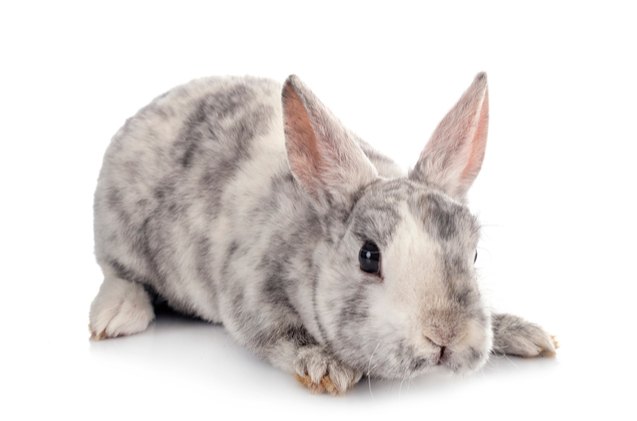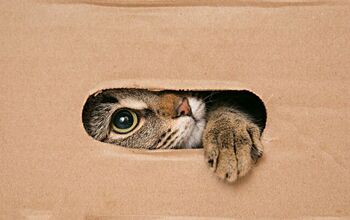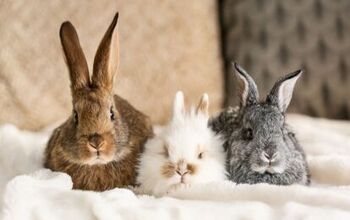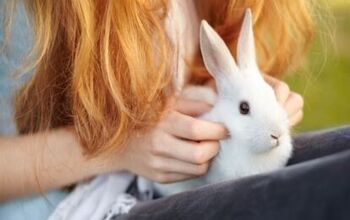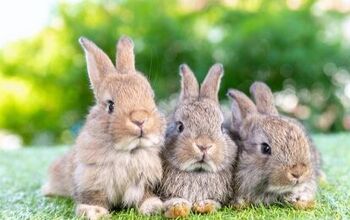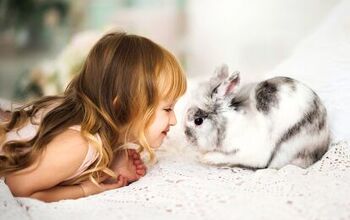10 Best Rabbits for Showing

Rabbit shows are an excellent way to meet like-minded people, have some fun with your pet rabbit, and enjoy seeing thousands of different bunnies in person – what’s not to like? Additionally, you’ll get the chance to talk to rabbit experts and more experienced rabbit owners and learn more about properly caring for your pet.
To show a rabbit, it has to be one of the 50 accepted ARBA breeds and to have show-quality features, which differ from breed to breed. Shows can be local to your area or state, and there are various categories your pet can compete in, from breed-specific ones to best overall in certain categories, e.g. best youth rabbit. You could go home with a lot of nice memories, and even a ribbon or an award!
Rabbits usually enjoy shows, too, if they are properly socialized, as they’ll love the attention they get and won’t mind the crowds. If you are looking into getting a pet rabbit you’d like to show as well, here are the most popular rabbits for showing, both for their lovely looks and calm temperaments that make them easy to train and adapt to the show life.
#1 Mini Rex Rabbit
These plush, gorgeous rabbits often win top prizes at shows, and it’s no wonder – they are stunning. According to the breed standard, a Mini Rex rabbit has a compact and rounded body, which should look like a half-sphere when posed for the competition. The shoulders are firm and wide, slightly tapering towards the hindquarters, which are the widest part of the body. Their ears are thick and short, and their head rounded and balanced with the rest of their body. The fur is short, shiny, and plush, without protruding guard hairs.
#2 Silver Rabbit
Rare but beloved, the Silver rabbit is one of the ancient breeds that still persist to this day and equally captivates the hearts of many admirers. Dense and short-standing, their fur resembles that of a Silver Arctic fox, which earned the breed its name. Although there are a few possible colors, only black Silver rabbits can be currently shown, so that’s your primary trait to look out for. As a commercial rabbit type, they should have short shoulders and a well-filled body with straight hindquarters.
#3 American Fuzzy Lop Rabbit
As their name says, these bunnies are cute and fuzzy – and you’ll meet many of these adorable rabbits on shows. For an American Fuzzy Lop to be considered show-quality, they should have a compact body, with the width, length, and depth of it being close in dimensions so that, when posed, this bunny resembles a ball of fluff that’s flat on the bottom. The ears should be balanced with the rounded head, which should have a flat face with chubby cheeks. The coat (which is actually wool) should be dense and have a distinct texture.
#4 Polish Rabbit
Calm and friendly, the Polish rabbit usually feels at home in busy shows and competitions. For your pet to win any awards, though, they’d have to show exemplary traits, such as a small, compact body with well-rounded hips which are wider than the shoulders. Their head is short and medium-full, and the ears are small and in proportion with the rest of their bodies. Flyback, fine, dense coats are preferred and bunnies with rollback coats are disqualified.
#5 Lionhead Rabbit
The small, unique-looking Lionhead rabbit is a favorite pet of many, so it doesn’t surprise that you can see those fluffy manes quite often at shows. These tiny bunnies should be posed upright, with their front feet resting lightly in front of them, so their compact and well-rounded body is under the spotlight. The width of the shoulders matches that of the hips, and their head is slightly rounded and wide. It’s their wooly mane that will be judged the most, though, as it brings the most points – it should be at least 2 inches in length, form a full circle around the head, and have a dense texture.
#6 English Angora Rabbit
These round balls of fluff are prized for their luxurious wooly coats, so it’s no wonder that their fur is the most important criterion for showing. The English Angora’s coat should have a silky texture and “be alive, healthy, and fall free”, without parting on the back. While over half of the points are reserved for their coat, general body type also matters and can be the deciding factor – their bodies should be short and compact, with a flat and broad head, with their V-shaped ears short and with tassels.
#7 Mini Lop Rabbit
In contradiction with their name, Mini Lops should have a massive, thick-set body with a maximum weight of 6.5 pounds for a senior rabbit. Overall well-filled, they should have rounded, broad hindquarters, with a gradual widening starting from shoulders to the hips. As their body is heavily muscled and firm, the head should also be in balance – strong and sturdy, with a short neck and boldly arched crown. As this is a lop breed, the ears should, well, lop down the sides of their heads.
#8 Checkered Giant Rabbit
A breed that’s been recognized by ARBA for over a century, the Checkered Giant rabbit has a long and proud tradition as a show rabbit. They should weigh at least 11 pounds (there’s no maximum weight set), with a slender and muscular body that has a semi-arched mandoline shape when posed. They have a wide and broad head with upright ears, and a short, soft coat that’s white with black or blue markings. The standard of perfection requires that these black or blue markings cover the rings around the eyes, as well as cover the entirety of their ears.
#9 Californian Rabbit
USA born and bred, this beloved rabbit breed is a common sight at rabbit shows. To be able to successfully compete, a Californian rabbit should display the standard characteristics of the breed, such as the commercial type profile when posed, showcasing the body which is medium in length, plump, and firm, with short legs and erect, straight tail. Their flyback fur is white with distinct markings, and the preferred color for the markings is black.
#10 Champagne d'Argent
A frequent winner of rabbit shows, this French rabbit breed comes in many colors, but only two are recognized by the ARBA – Champagne, and Crème. Their coats start off black, interestingly enough, and the silver color develops as they mature. This is why their undercoats remain dark, with elongated black hairs interspersed with their silvery fur, creating a unique and unmistakable look and texture, which is silky and thick. In addition to their coat, their bodies will also be judged – a commercial type, they should have wider hindquarters and be generally well-rounded.
A Quick Guide to Showing Rabbits
Showing rabbits is not as straightforward as you might think – not all pets can be officially shown. To participate in ARBA shows, your rabbit has to look like their breed’s “standard of perfection” which is a set of uniform traits that ARBA sets for each of its recognized breeds. This includes minimal and maximum weight according to the rabbit’s age (it’s different for bucks and does and for young rabbits), certain body type and shape with precise descriptions of width and proportions, head shape and appearance, shape and position of the ears, shape, position, and color of the eyes, type of coat, coat colors, and so on. Additionally, there are certain traits that are considered less favorable and can cost points (e.g. certain head shape that’s not typical for the breed) and some that can be considered grounds for disqualifications (for instance, a coat color that is not recognized by ARBA). Your pet will be judged on their overall general appearance, as well, so they should be in prime health and top form – rabbits that are molting or, say, have a chipped tooth can lose a few points. As you can see, there’s a big list of official requirements for a rabbit of a certain breed to be considered show quality. If your pet doesn’t tick all of the boxes, it doesn’t mean that there’s anything amiss or that they are not the breed you were told they are – it’s just that show rabbits have to be the finest examples of the breed there are. Add to that the fact that some rabbits don’t have the personality to enjoy the show – they are too timid, afraid of crowds, or dislike being handled – and it’s easy to see that picking out a show rabbit is no easy feat.
In case you have read through the ARBA standard of perfection for your rabbit’s breed and realized your bunny has a chance to win an award (or at least can compete for one) at an official show, there are a few things you should know about getting your bunny show ready. First, to be shown at any ARBA show, your rabbit has to have a permanent ID tattoo in their left ear, so you’ll have to find an expert to do it if you are not willing to do it yourself (which might be daunting for some people). Next, you’ll want to ensure that your rabbit is groomed to perfection: their nails should be trimmed, their coat clean and brushed, and their teeth without any cracks or signs of malocclusion. A rabbit should also be properly socialized and accustomed to being handled, as they’ll be examined by judges and posed by you – a scared, squirmy rabbit will only be more stressed out at a show, and that’s the last thing any owner wants. Furthermore, it would be very useful if you could train your rabbit to pose in a certain way (or, more precisely, to be posed) as each breed is expected to be posed according to breed standards as a way of exhibiting their fine traits.
Next, you’ll want to fill out all the entry forms and documentation needed for the show and arrive early – at least an hour before the set time, so you can have time to prepare. You’ll need a spacious carrier and food and water for your pet for the day. Depending on the size of the show, it can take a whole day to show all of the rabbits, so it’s best to have all the supplies your pet (or you) might need to get through it comfortably. The judges will examine your pet and score your pet according to the breed’s standard of perfection – for some breeds, most points are reserved for the coat appearance and color, others are scored mainly for the shape of their body, and so on. After the show is over, it’s recommended to keep your show rabbit quarantined from other rabbits in the house, if you happen to have more than one bunny. The quarantine period should be 1 to 2 weeks, to prevent any disease from spreading in case your pet caught something from other rabbits at the show.
In the end, the most important thing to have in mind is that the goal shouldn’t be winning, but rather enjoying yourself with your pet and meeting other rabbit enthusiasts and experts. Your pet might not always (or ever!) bring an award home, but that doesn’t mean that both of you won’t enjoy the attention at the show and socializing. Never try to force your rabbit to pose at shows as it is both cruel and damaging to your relationship. Also, if you notice your pet is stressed out at these events, don’t force them to continually go on shows – rabbits are sensitive animals, and stress will do them no good.

A proud mama to seven dogs and ten cats, Angela spends her days writing for her fellow pet parents and pampering her furballs, all of whom are rescues. When she's not gushing over her adorable cats or playing with her dogs, she can be found curled up with a good fantasy book.
More by Angela Vuckovic




